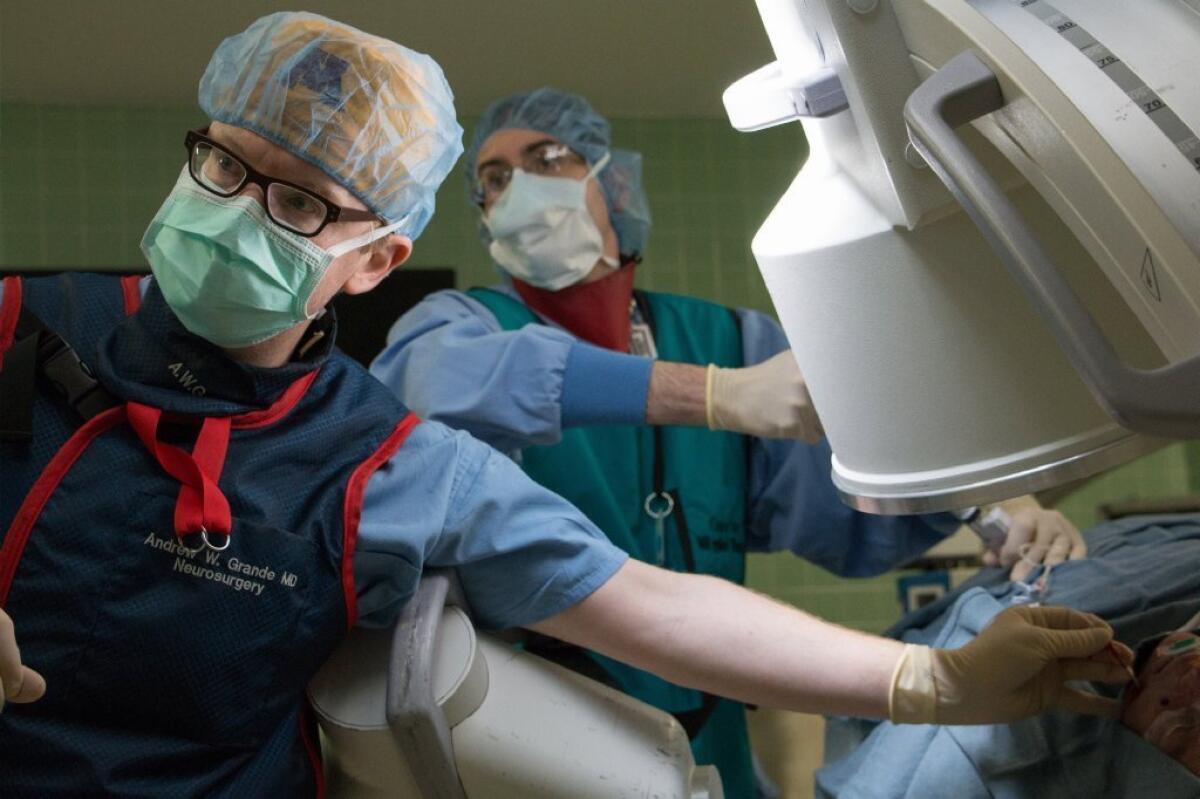Work hour limits for doctors in training don’t improve patient safety

- Share via
Do you think you would be better at your job if you weren’t allowed to work for more than 80 hours per week? What if you were forced to clock out after working for 28 hours in a row?
If you’re a new doctor in your first years of training after medical school, the answer seems to be no.
Two studies published Tuesday in the Journal of the American Medical Assn. examined the effects of new work rules that limit the number of hours interns and residents can spend caring for hospital patients. In both studies, researchers found little to no evidence that patients fared better or worse after the new rules went into effect in 2011.
The controversial rules, set by the Accreditation Council for Graduate Medical Education, were designed to reduce the risk of medical errors by overworked and tired interns and residents, an issue that captured the public’s attention after the death of college student Libby Zion at New York Hospital in 1984.
An initial set of ACGME reforms in 2003 capped the workweek at 80 hours. The 2011 modifications reduced the maximum number of hours a trainee could work consecutively from 30 to 16 (for interns) or 24 (for residents). (However, they could stay for up to four more hours to make sure their patients were properly handed off to doctors on the next shift and to attend educational lectures.)
You might think doctors would be happy to know they couldn’t be required to work more than 24 hours in a row and be guaranteed at least one full day off per week. But many in the medical establishment worried that the restrictions would weaken medical training because new doctors wouldn’t be able to spend enough time caring for their patients. Also, the shorter shifts would mean more patients being handed off, which could mean more mistakes.
Two research groups waded into the debate by looking at data from the one to two years before and after the new rules went into effect.
One, led by experts from the University of Pennsylvania, compared the treatment of nearly 2.8 million Medicare patients who went to 3,104 hospitals around the country for a variety of conditions, including heart failure, gastrointestinal bleeding and orthopedic surgery. The team found that the new rules had no effect on patients’ risk of death in the 30 days after they were admitted to the hospital. Nor did the rules have any effect on the risk that a patient would need to be re-admitted to the hospital within 30 days of their initial admission.
The other study, led by researchers from the American College of Surgeons and Northwestern University, focused on 535,499 patients who had surgeries in 131 hospitals. These researchers came to pretty much the same conclusion: “Reform was not associated with a change in the likelihood of death or serious morbidity,” they wrote.
Compared with patients who went to hospitals that don’t rely on interns and residents, the patients who went to the most intense teaching hospitals fared worse in the first year after the new rules went into effect, the researchers found. However, that gap was erased by second year of the new regime.
With interns and residents spending less time at the hospital, they ought to have more time to study for their board exams. So the second group of researchers looked at the pass rate for surgical trainees and found no significant difference between 2011 and subsequent years.
If the data didn’t show that new limits on work hours helped patients, neither did it show that they were harmful. So in the ongoing debate about limits on duty hours for new doctors, the studies offer evidence for those on both sides.
The authors of the Penn study put it this way: “Our findings suggest that in the first year after the 2011 duty hour reforms, the goals of improving the quality and safety of patient care … were not being achieved. Conversely, concerns that outcomes might actually worsen because of decreased continuity of care have not been borne out.”
So does this mean the new rules are good or bad? The answer isn’t important, according to the authors of an editorial that accompanies both studies.
“We think this is the wrong question to ask because there was no justification for making the rules more complex or restrictive, as occurred in 2011,” wrote Dr. James Arrighi, the head of the ACGME internal medicine residency review committee, and Dr. James Hebert, immediate past chair of the ACGME surgery residency review committee. Without “clear data demonstrating benefit,” the medical community should listen to the concerns of residency directors who say the rules undermine important aspects of doctors’ training.
For more medical news, follow me on Twitter @LATkarenkaplan and “like” Los Angeles Times Science & Health on Facebook.







